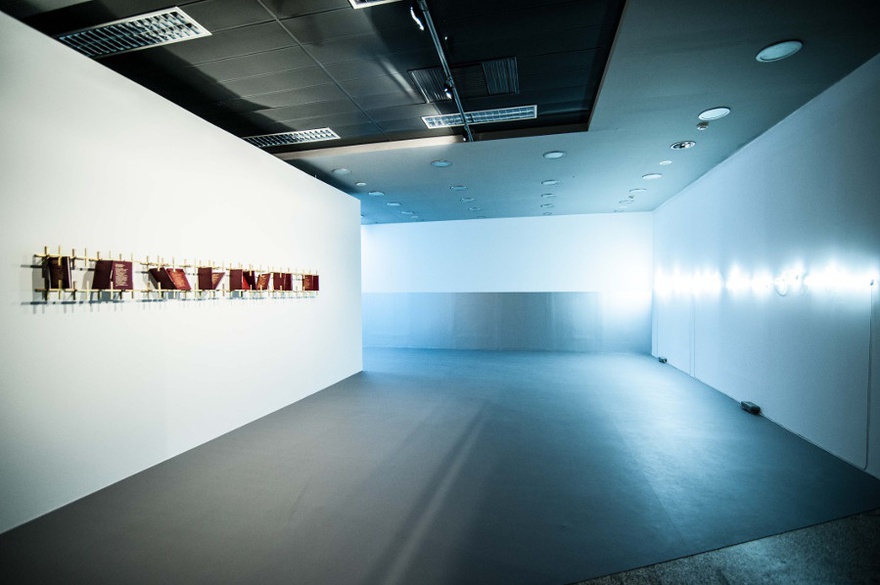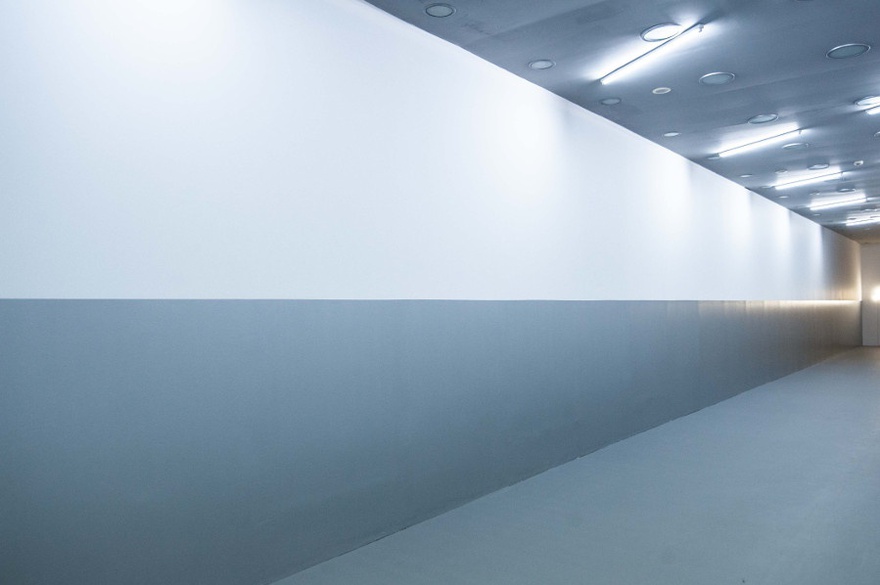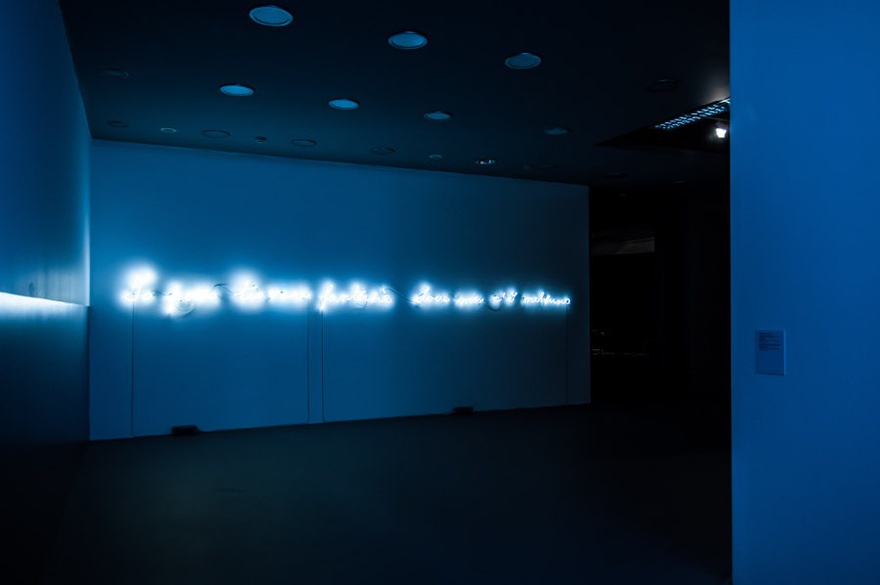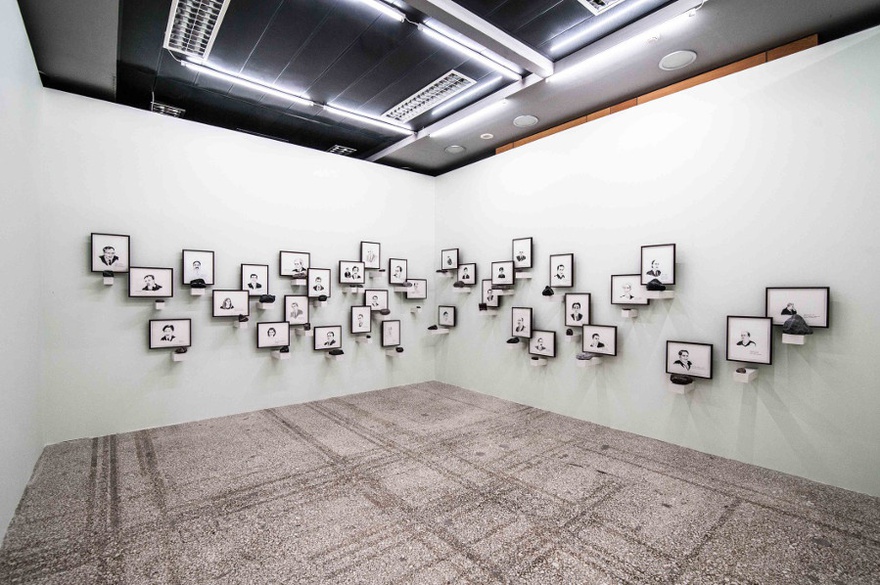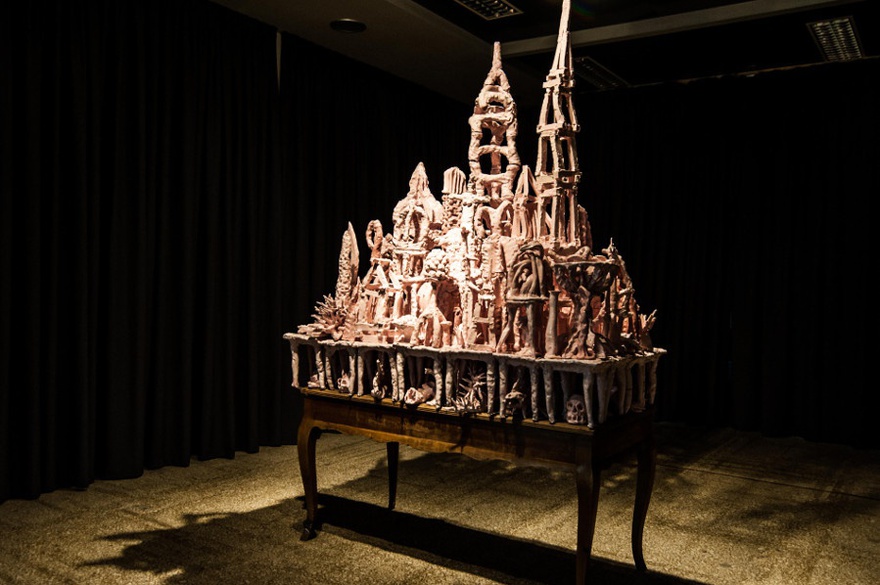Reviews
The 5th Thessaloniki Biennale
Between the Pessimism of the Intellect and the Optimism of the Will
During the press preview for his exhibition at the Cycladic Museum in Athens, Greece, in 2012, Jannis Kounellis stated that it would be wrong to not make or show art in Greece now. 'Now' of course referred to the context of the Greek sovereign debt crisis, already by then in full austere and cataclysmic swing. I thought about what Kounellis said many times after that: for example, when I attended the opening of Adelina von Fürstenberg's central exhibition for the 4th Thessaloniki Biennale in 2013, Everywhere But Now, just one night after a member of the far-right national party in Greece, Golden Dawn, killed a young hip-hop artist, Pavlos Fyssas, in Athens. Fyssas's death prompted a major public, state and regional response, and sparked a wider global discussion around the systemic rise of the far right in a country crippled not only by its debt crisis but also by overwhelming migration from the Middle East and Southeast Asia as a result of recent geopolitical events.
Fast forward to 2015, and Kounellis' words came to mind again less than a month after the opening of the 5th Thessaloniki Biennale in June, as the SYRIZA government, elected only five months before in January 2015, called a shocking referendum about a new round of austerity measures put forward by the so-called Troika. Katerina Gregos's central exhibition for the 5th Thessaloniki Biennale – a miraculous Biennale to say the least, given the fact that funds were only cleared some three weeks before the event opened – could not have been timelier in its conception. The exhibition title sums up the state of current affairs not only in Greece or in the Mediterranean, but everywhere: Between the Pessimism of the Intellect and the Optimism of the Will. It comes from an aphorism by Antonio Gramsci written in Prison Notebooks (Quaderni del carcere), in which he wrote: 'The challenge of modernity is to live without illusions and without becoming disillusioned […] I'm a pessimist because of intelligence, but an optimist because of will.' In this, Gregos locates a 'two-sided human psychology engendered by moments of crisis' – when 'the old has died and the new has not yet been born.'
In such a fraught interim, Gregos explains, 'we find ourselves witness to all sorts of symptoms of malaise.' One such symptom was expressed in the vote put to the Greek people: a decision between two roads, each threatening dire implications that have since manifested. Such a malaise was expressed, too, in one of the fourteen works commissioned for this Biennale (amongst older works on show): Nikos Navridis's Revolving Door (or The Peristrophon) (2015). Here, the revolving door of Pavilion 6 at the historic Thessaloniki International Exhibition Centre has been altered so that you can never reach the other side: the doors simply rotate so that you exit from where you came in. Overhead, a quote from Samuel Beckett's Endgame is placed in neon on both sides of the door – inside and outside: 'The end is in the beginning and yet you go on.'
In many ways, Gregos's central exhibition is a response to Beckett's quote, extracted by Navridis from a play Hersh Zeifman once described as 'an endless cycle of torture that ensnares the audience and creates an unbearable tension.' To this end, work by 44 artists plus one collective from 25 countries around the world has been gathered together so as to address the various permutations of crisis in ways that are existential, political, allegorical and poetic. These expressions include Theo Prodromidis's Goodbye…etc / Element for the support of new structures (2013–2014), installed at the end of a long corridor painted silver from which the show begins: Peter Friedl's 1999 metallic silver Wall Painting, Untitled. The corridor ends with a neon by Friedl: Untitled (Lo posso trovare fantasie dove non c'e nessuno) (2011), which reads (in Italian): 'I can find patterns where there are none.' This is placed opposite Prodromidis's installation, which comprises a series of books arranged on a shelf constructed to suggest the form of text: the product of a 16-hour long performance that lasted two days in 2013. The books were created in a collaboration between Prodromidis and actress Aggeliki Papoulia, founding member of blitz theatre group (established in 2004). They feature 524 sentences produced using a method formulated by Tristan Tzara in which sentences were built from the 524 books given to the artists after they called for printed material relevant to the discourses of the Left.
To begin a biennale with a work that questions the compulsion and virtue of apophenia (or 'patternicity'), and a work that considers a collection of nonsensical sentences produced by a constellation of texts relating to a single yet fragmented political faction, raises an important question: where does art stand in these contradictory political times? Take one project by Angela Melitopoulos and Angela Anderson, Unearthing Disaster (2014): a study into the forces of disaster capitalism at play in the fascinating case of the Skouries mine in Halkidiki, northern Greece, which has a long and troubled history that includes the Greek State, the European Commission, Canadian mining company Eldorado Gold Corp and protest movements for and against this large-scale open-pit gold mine. In another work, Bertille Bak's tapestries of famous paintings by Delacroix, Duyster, Girardet, Goya, Poussin, and Scheffer are shown as part of an installation preceding a video: Faire le Mur (2008) – what Catherine Spencer described as 'a fieldwork study of Bak's familial hometown Barlin, an old mining village in the north of France'. The narrative is a common one of gentrification and its affects – the fire sale of public rights for private interests. As Spencer writes, 'Bak's film follows the members of this community attempting to resist the opportunistic top-down reconfiguration of their environment, studying their group rituals and interactions as they plot a series of rebellions.'
Rebellion is incited, too, in James Beckett's installation Voodoo Justice for People of Finance (2013): pencil on paper portraits of figures from various financial bodies and institutions, with their affiliations and names noted on the paper, each placed on shelves with a rock on which a location is written; presumably the locations of the accused (or guilty). Parrhesia is implored in Eleni Kamma's installation, Parrhesia: courage/truth/speech (2015), in which the artist expands research into the obligation of speaking the truth through interviews, sound recordings, images and props related to political movements in Greece and Turkey. That Kamma's work is installed next to Can Altay and Jeremiah Day's You Don't Go Slumming (2009–2015), which studies the mussel trade in Istanbul in granular, human detail, is a clear expression of the relational geographies that occur within this exhibition's conceptual framework: a geographical net grounded in Nick Hannes's Mediterranean: Continuity of Man (2010–2014), in which images from various points along the Mediterranean's edge, from Egypt to France, are photographed and presented on a wall like a map.
Yet, despite the weight of the serious subject at hand – a very global crisis – this is an exhibition that deploys wit with affective precision at every turn. Take Erik van Lieshout's video The Basement, produced for Manifesta 10 in Saint Petersburg, 2014. Van Lieshout turned the Hermitage's basement into a cat paradise for the roughly 70 cats that form the Hermitage 'guard', kept in the building to catch mice for some two hundred years in what van Lieshout found to be squalid conditions. In response, he decided to create the best place in the world for the museum's mascots, complete with crazy jungle gyms with soft cushion trees to sit on and branches to scratch. The video documents not only the construction of this haven, but the process it took to create it and the impact it had, not only on the Hermitage cats, but its staff community. The political implications of such an act were made all too clear in the way the video was installed in a room filled with photocopied posters, and scrawls on the wall. At the entrance, a poster with three black cats reads: 'RIOT' (note the subtle salute to Pussy Riot).
You might say van Lieshout's project articulates the various levels at work in Gregos's exhibition. There is tragic farce: the wittiest – and saddest – kind. Take Nedko Solakov's 2014 Illusions series: absurd yet profound stories told with a dark droll in tiny text over watercolour illustrations executed in black ink. (In one, there is only a black rectangle with text in white that reads: 'A common darkness with a hidden illusion, unfortunately, a blind one.) There is tender lamentation and sorry reflections on the human condition. In Annika Kahrs' video, Playing to the Birds (2013), we watch a piano soloist play Franz Liszt's Saint Francis of Assisi preaching to the birds in the most opulent of rooms, to a room full of caged birds. There is sincerity, too. In Mikhail Karikis's video Children of Unquiet (2013–2014), in which children read out the section on love in Hardt and Negri's Commonwealth. Continuing the relationship between activism and play is Ivan Argote's project, Activissime (Thessaloniki version) (2015), produced during workshops with schoolchildren in Greece, in which drawings are presented in a room in which a projection of the sea is accompanied by an audio of a voice telling a story made from many. The installation also includes a canvas banner on which the words are sprayed in Greek: 'We are children, we are strong.'
Such sincerity is by no means soft in this exhibition. We live in precarious times, after all. Thus, Gregos lays out a clear position that seems to be historically and politically rooted to Antonis Pittas's Throw Hands (2015), an installation that comprises four different large leather beanbags in the shape of hands – in red, blue, white and yellow – that represent the four pivots of the Soviet Union at the time of the Russian avant-garde, when, quoting Pittas, 'the artist was considered an engineer of society.' These 'handbags' are intended for use and interaction; they are presented alongside a series of clipboards produced in marble, bronze and other metals, on which various collages show the images of hands of political figures making gestures. The point of the work, it seems, is reflected in entirely different terms via one of the most impressive material works on show: A Glacier At Our Table (2013) by Nikos Tranos – a ceramic castle constructed from sickly, soft pink shapes of clay, each positioned as part of some three-dimensional puzzle. The sculpture is so precariously composed it looks about to collapse at any moment. It might be described as a beautiful, other-wordly, profound Jenga, or a kind of fleshy, structural leviathan. It is at once beautiful and abhorrent; like a banquet table laid out by the pagan gods to trap the gluttonous. Yet, the tactility of the clay – the artist's hand is ever-present in the impressions of his fingers left on fired surface – highlights what always lies at the heart of an art work: the gesture, and its ability to make things happen.
This brings us back to van Lieshout's video and how it illustrates this exhibition's statement of intent. One of the core elements of The Basement was the action that produced the work: the desire to make a home for those who had been marginalized. Consider now the recent Greek referendum, and how neatly Gregos's understanding of Gramsci's aphorism sits with it, when it comes to 'an awareness of the gravity of a harsh reality' on the one hand and 'the inherent human desire to envision a better world' on the other. In this exhibition, division is more of a spectrum to play with than a force of separation; a space of productive dissonance in which ideas might come together so as to offer perspectives towards action. This potential was showcased in Anila Rubiku's Defiants (2014), in which she presents twelve 'portraits' all depicting metal bars rendered either in watercolour on paper or as iron grill. These were produced in response to working with battered women jailed in Tirana for killing their husbands in self-defence with the help of psychologist Dr. Jeffrey Adams. As a result of the project, many of the women Rubiku worked with were set free. The work is a product of both intellect and will combined: like the central exhibition of the 5th Thessaloniki Biennale itself.

